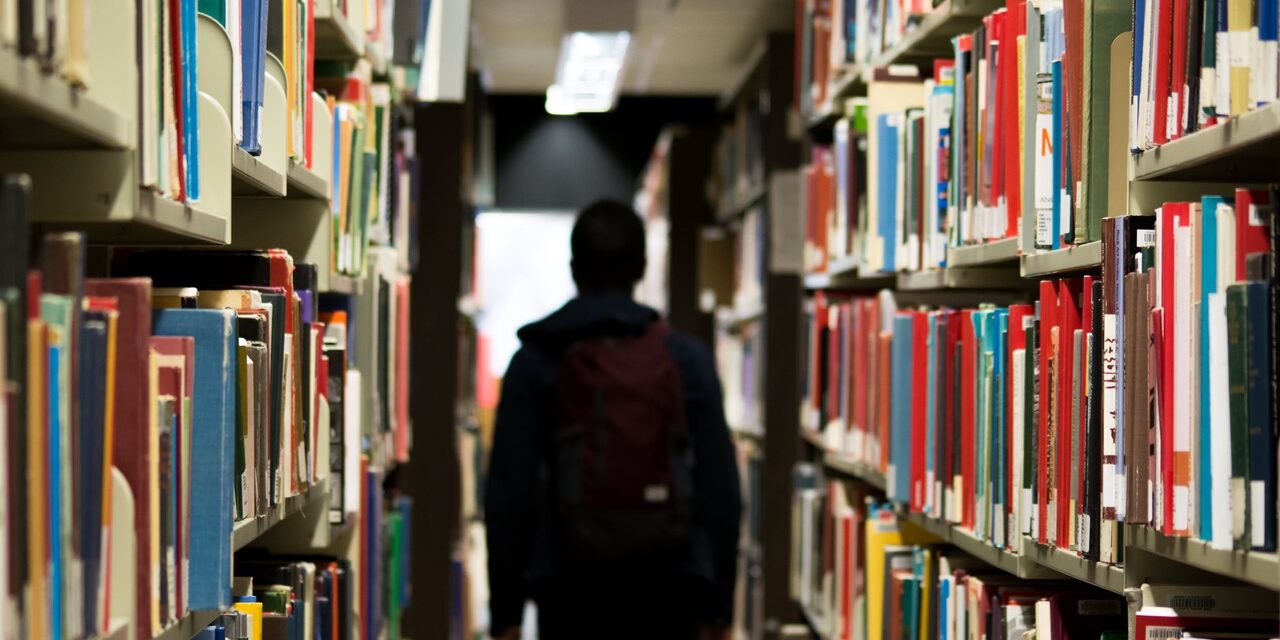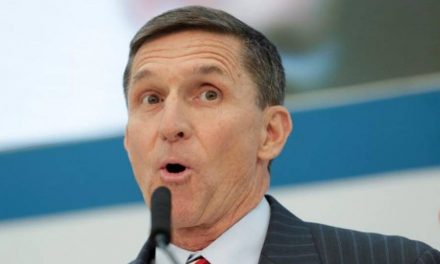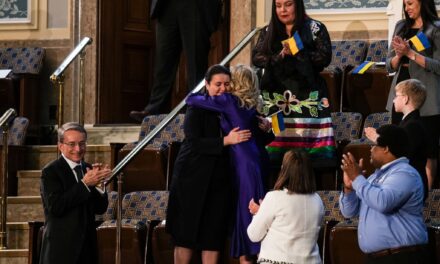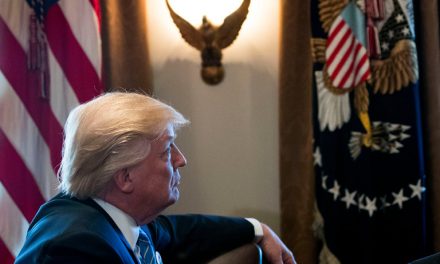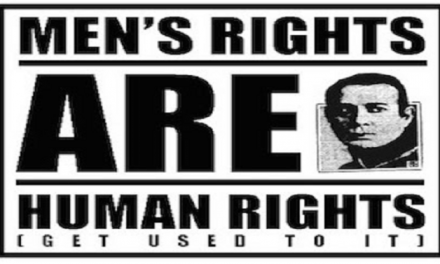Come the revolution, we will all live in “The Gayborhood.” It’s nothing new. In fact I’ve written about it before, and now the The New York Times has printed yet another article lamenting the loss of “the gayborhood.”
The article opens with the famed Halloween party in San Francisco’s Castro district, which was cancelled this year.
The once-exuberant street party, a symbol of sexual liberation since 1979 has in recent years become a Nightmare on Castro Street, drawing as many as 200,000 people, many of them costumeless outsiders, and there has been talk of moving it outside the district because of increasing violence. Last year, nine people were wounded when a gunman opened fire at the celebration.
For many in the Castro District, the cancellation is a blow that strikes at the heart of neighborhood identity, and it has brought soul-searching that goes beyond concerns about crime.
…There has been a notable shift of gravity from the Castro, with young gay men and lesbians fanning out into less-expensive neighborhoods like Mission Dolores and the Outer Sunset, and farther away to Marin and Alameda Counties, “mirroring national trends where you are seeing same-sex couples becoming less urban, even as the population become slightly more urban,” said Gary J. Gates, a demographer and senior research fellow at the University of California, Los Angeles.
At the same time, cities not widely considered gay meccas have seen a sharp increase in same-sex couples. Among them: Fort Worth; El Paso; Albuquerque; Louisville, Ky.; and Virginia Beach, according to census figures and extrapolations by Dr. Gates for The New York Times. “Twenty years ago, if you were gay and lived in rural Kansas, you went to San Francisco or New York,” he said. “Now you can just go to Kansas City.”
After taking Parker trick-or-treating in our neighborhood, I think what we’re seeing is really a shift, one that reminds me of something I wrote a while back. Neighborhoods just change. And as they change, people change with them. The interesting thing to me is how much that change frightens people at both extremes.
Dana writes of concerns about the decline of gay culture, and who gets blamed for it. Both she and Stephen Miller hit the nail on the head about the change that’s really going on.
Dana writes:
Oh, great. Not only are same-sex parents being blamed for the downfall of traditional American culture, now we’re blamed for the downfall of our own culture as well.
No, I’ll put a more positive spin on that: We’re responsible for the creation of a new sub-culture (or is that a sub-sub-culture?) of LGBT families. We take a little from LGBT culture, a little from traditional family culture, some legal and/or biological machinations to hold it all together, and stir well.
And Miller writes:
An increase in social acceptance of gay people is a large reason for the decline of traditional gay ghettos (the Times says “enclaves”), including uber-enclaves such as the Castro, NYC’s West Village, and West Hollywood.
After a couple of years in the burbs, following more than a decade of life as a urban gay man, I can see reflected in my own life the changes that some folks in the Times piece lament. I do sometimes miss it, the convenience of living so close to fabulous shops and restaurants. I miss the days of being able to walk through DuPont and safely assume any guy you met was gay until proven otherwise.
But stepping out into Dupont Circle and seeing all kinds gay people everywhere, and then the next day at the march seeing so many that they filled my field of vision changed me. I said to straight friends of mine back at school, who asked me about the march, that it was “the safest, the most ‘OK’, and the most at home I’ve ever felt in my life.”
And it was. As a gay man, it was the safest space I’d ever been in. Little did I know I’d move to D.C. a year later, but when I did went back to Dupont Circle — that “safe space.” For ten years I lived as close to Dupont as I could afford to, and socialized there as often as I could. And among the gays & lesbians I socialized with, there was a feeling that those few blocks of the city were “ours”; a place where we were relatively safe from homophobia, discrimination, etc. My friends and I used to joke about it, but to some degree it was true then that any guy you saw in Dupont was assumed “gay-until-proven-straight.”
And yet I knew it was changing. I knew the day that a Lane Bryant shop opened up on Connecticut Avenue that it was changing. That was a few years ago, and now half the gay-owned or gay-friendly businesses that used to be in DuPont have moved to Logan Circle, the neighborhood we vacated when we moved to the ‘burbs for better schools, and that neighborhood — which was pretty gay even when we lived there — has gotten even more gay. So much so, that the Pride parade this year wound through the streets of D.C. from DuPont Circle to Logan Circle.
DuPont is still a safe place, and now Logan Circle is a relatively safe place for LGBT people. And the safe space actually just gets larger when, as a result of the social acceptance Miller spoke of. And that’s a good thing because we need more safe spaces.
Since all those various forces started changing American society, there’s been a common theme within gay life in America. It’s one shared with many other minorities in America. When we have nowhere to go, we make our own place to go. When we can’t go home, we make our own home. When we’re told there is no way,we make our own way.
That’s as true for the gay people who mourn the changes in the Castro as it is for gay moms and dads pushing strollers through the Castro, or passing through Dupont on the way back home to the ‘burbs, to feed the kid and put him to bed.
I knew the moment Dupont changed for me. It was the day I stopped in my tracks on Connecticut Ave. and saw that a Lane Bryant outlet had opened. Nothing against the store, mind you. But I don’t know many lesbians who shop there. It was a sign that the neighborhood had changed. And that was OK. It changed when gays moved into the neighborhood an gentrified it. (And maybe gentrified themselves right out of the market.) Now Logan Circle, the next neighborhood over, is becoming a new gay enclave.
And it will change again. Where we need “safe spaces” we’ll create them. But perhaps the most significant change, one that’s missed in the article, is that our lives are changing too. Some of us our raising families, moving to the suburbs and even living in the same small towns where generations before us could not, at least not openly and peace. Maybe the biggest change of all is that there’s more safe space than there was before.
So,yeah. There goes the gay-borhood. Now it goes wherever we go.
It does follow wherever we go. And wherever we go, we make that place safer for for the next queer person who comes after us, whether it’s a new family on the block or a blossoming queer youth growing up in a neighborhood that’s much safer for him or her than it might have been 30 years ago.
I thought about that last night as I took Parker trick-or-treating in our neighborhood, dressed in his Power Ranger costume. (We don’t watch the show at home, but he got the costume as a birthday gift last year.) We’ve been in the neighborhood for a year and a half, and have become part of the neighborhood, to the point that our Republican neighbors across the street — who have a son Parker’s age — invited us to their Halloween Party and their son’s birthday party.
And we keep meeting new neighbors. While I took Parker to the neighborhood grocery store, which was giving free “goody bags” to kids wearing costumes, the hubby got acquainted with a new neighbor who’d heard about our loss last month. Just about the time she was asking the if his “wife” had “lost the baby” Parker and I returned home. And while she was comforting her two year old, who was ready to go around the corner and go back home, I could see her “doing the math” on our family just like everyone else does. She did the math, and when Parker and I went around the corner and rang her doorbell, she was glad to see us and even the two-year-old was glad to see us.
Who knows? Maybe she’ll put a “Civil Marriage is a Civil Right” sign in her yard like our other neighbor’s did. Or maybe she’ll do what another neighbor of ours did when we told here we were going to the Equality Montgomery County cook-out at a local park a few weeks ago. She packed her kids and came over to the park herself.
So I look around the neighborhood and I think that maybe we’ve contributed to making it a bit more of a “gayborhood,” that will be safer and more accepting for the next queer kid who grows up here, or the next gay family that moves in here. And there will be a next family. I discovered that when Parker and I continued trick-or-treating one street over.
I was telling Parker that the houses with porch lights on were the ones most likely to be giving out candy, when he spotted such a house and said “Let’s try that one.” We rang the doorbell, and a teenage-looking girl opened the door. There were a few more teenage-looking kids, and they were all wearing costumes.
By the time I got Parker to say “trick-or-treat,” because he needed a cue from me, and adult came to the door, a woman who looked to be a older than me by a decade or so, and introduced herself and her kids who were particularly happy to see us. About that time another woman, who looked to be about the same age, appeared at the door and the first woman introduced the second as her partner and the kids as their kids. It was my turn to do the math, and when I told them that my hubby was at home handing out candy, they already knew.
I guess they were part of the reason my family had such an easy time fitting in when we moved into the neighborhood. And perhaps they’ll be part of the reason Parker may have an easy time of it when he starts school. Because somebody came along and made it a safe place, and did it both because they wanted to and because they had to.
One of the inevitable results of the increased acceptance Stephen wrote about is the change that Dana wrote about. The culture of the gay ghetto evolved because it was needed during a time when gay people had far fewer choices about how to make their way in the world. Staking out small patches of neighborhoods where we could safely be ourselves and be around our own was a necessity, and it may continue to be so for a while.
But now we have a lot more choices about how we live our lives. We may not be able to marry, but we can find partners and make lifetime commitments to each other. We may not be able to offer our families all the protections that other families enjoy, but we can create our own families through various means. And, as with anything in life, our choices change us. If you’re a parent, there comes a moment when you look around and ask yourself where you want your kid to grow up and how you want them to grow up. For some of us, that means moving from our comfort zones in gay enclaves to suburban settings where we inevitably expand the comfort zones of those we encounter, who live next door to us, and whose kids grow up with ours. Kids who will, someday, vote.
As acceptance leads to more acceptance, it’s not hard to imagine the continue evolution of gay culture to include the wide range of choices progress has given us, and the continued diffusion of that culture as we act on those choices and put down roots in the neighborhoods those choices lead us too. The benefits are mutual if you consider that not only are we pushing the envelope of progress and acceptance along as we go, but a paper published earlier this year suggests that gay-friendly cities enjoy more prosperity.
This morning on CNN’s In the Money, Florida argued that educated kids are generally moving to the most “gay-friendly” cities after graduating from college because those cities tend to have the best job markets.
After realizing that the top 5 “gay-friendly” cities in the US — San Francisco, Seattle, Boston, Portland (Oregon), and Tampa — are also prosperous centers of technological innovation, Florida decided to do a more thorough study. The results, he said, held up for other cities as well.
“Places that were open to gay and lesbian people were also the kind of places that could attract not only smart young people, but also Indian and Chinese immigrants who come here and start a lot of high tech companies,” he said. “They were attracting people across the board, building up a talent base, and then innovating and starting these new enterprises.”
Florida said he thinks it is the open mindedness of these cities that has allowed economically successful communities to emerge, rather than prior economic success attracting open minded people.
If that’s true, we may find ourselves approaching a point where the wider range of choices we now have, and the reality of more cities becoming gay-firendly in the course of trying to attract the “creative class” may mean that the exclusively gay enclaves isolated in a few heavily urban areas may be a thing of the past, and the gay-friendly enclaves located in an increasing number of cities may be the wave of the future.
So, yes, there goes the gayborhood. But also, here comes the gayborhood. Maybe even coming soon to a neighborhood near you.
Crossposted from The Republic of T.

